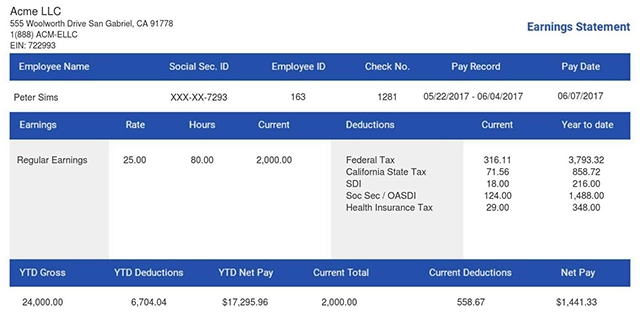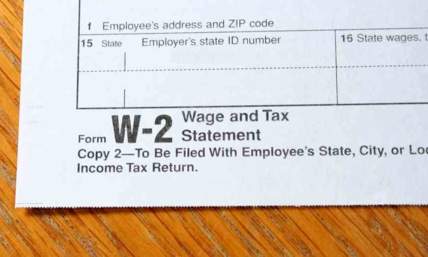How Many Hours Is Full Time? and Why It Matters
Have you ever asked yourself, "How many hours is full time?" You are not alone.
Currently, there's no specific blueprint in the United States that sets an exact number of hours for full-time work. Still, most people think of a full-time job as about 35 to 40 hours per week. This is a classic Monday to Friday, 9 am to 5 pm schedule.
So while 40 hours is the conventional answer, the actual cutoff can vary depending on where you work. So, how do you know “How many hours is full time?” Find out in this detailed guide on full-time work and its benefits.
What Does Full-Time Mean?
Full-time refers to the number of hours an employee is expected to work, as set by law or the company policies. According to the US Bureau of Labor Statistics (BLS), "How many hours is full time?" is defined as 35 hours or more. However, this is not a legal rule that an employer must follow. In reality, most full-time jobs in the US fall somewhere between 35 hours and 40 hours per week. It all comes down to your employer, but 35–40 hours is usually the common standard.
How Many Hours Is Full Time Per Day?
The daily hours that qualify for full time vary by company and industry. Generally, if you're working five days a week at about 7 to 8 hours per day, that is full time. On the other hand, working just two or three days (around 24 hours total) would usually count as part-time.
It is important to note that some organizations have their own daily schedules for “How many hours is full time per day?”. Some are more flexible with the schedule, while others can be a lot stricter based on company policies.
How Many Hours a Week Is Full Time?
A schedule of 37.5 hours per week (five 7.5-hour days) is also commonly treated as full-time. When in doubt, the best step is to ask your employer directly: How many hours is considered full time? Many organizations also use the concept of a full-time equivalent (FTE).
One FTE usually equals 40 hours a week. Employers often use FTEs to plan staffing levels, budgets, and benefits. This makes it clear that even flexible schedules can still add up to how many hours is considered a full time job.
How Many Hours Is a Full Time Job According to The Law?
So, how many hours is considered full time legally? The tricky part is that U.S. federal law doesn't give one single answer. The Fair Labor Standards Act (FLSA) leaves it up to each employer to decide what counts as full-time. Still, different agencies and workplaces have their own benchmarks:
-
IRS / Affordable Care Act (ACA): Working 30 or more hours per week (or 130 hours per month) is considered full-time for health insurance purposes.
-
Bureau of Labor Statistics (BLS): For surveys and reports, full-time usually means 35 or more hours per week.
-
Common (traditional) standards: Many jobs follow the 40hours/week idea, that is, eight hours a day, five days a week.
-
Health law (ACA): Large employers with 50+ full-time staff must offer health insurance. 30+ hours per week counts as full-time for health coverage rules.
Because of these differences, the answer to “How many hours is a full time job?” is dependent on the company. At some workplaces, 32 or 36 hours might be enough to qualify for benefits. In another organization, the employer might strictly stick to 40 hours.
If an employer offers health insurance, paid leave, and retirement plans at 36 hours, it means, to them, 36 hours is full-time. On the other hand, another company may only offer the same perks to employees working 40 hours.
How Many Hours Is a Full Time Job in Overtime Hours
Once you know “How many hours is considered full time?”, the next question is, what happens on overtime? In most cases, a full-time schedule is around 40 hours per week. Anything over that counts as overtime for hourly employees.
According to the U.S. Department of Labor, hourly workers earn at least 1.5 times their regular pay. This applies to each hour worked over 40 in a week. For example, if you work 45 hours a week, the first 40 hours are paid at the normal rate.
However, the extra 5 hours are paid at time and a half. This doesn't make them more full-time. It just means extra compensation for extra hours.
How Many Hours Is Full Time for Exempt and Non-Exempt Workers?
It largely depends on the category of the workers. Whether they are exempt or non-exempt plays a key role.
Salaried Employees
The rules are different when it comes to employees who are paid on a salary basis. Salaried (or “exempt”) workers usually do not receive extra pay for going beyond 40 hours.
Their full-time job simply means sticking to the regular schedule, even if some weeks run longer. You are still a full-time employee, even if you work 50 to 60 hours a week.
Hourly Employees
On the other hand, hourly (non-exempt) employees are protected by overtime laws. So, when asking “How many hours is a full time job?”, here is what to note. For hourly workers, 40 hours is the baseline, with overtime pay for more.
Some states, like California, go further by requiring overtime for working over 8 hours in a single day. There's no higher category than full-time. It simply means your usual 35 to 40-hour weekly schedule. Any extra hours are counted as overtime pay, not an upgrade in the full-time status.
Let's break down full-time and overtime pay numbers.
-
If Alice earns $10/hour, working 40 hours gives her $400
-
If she works 45 hours, the extra 5 hours are paid at $15/hour (time and a half). This adds an additional $75
-
Total = $475 for the week. She's still one full-time worker. Those extra hours come together to boost her pay.
Health Workers
Some industries also use longer shifts.
A common example is healthcare, where nurses often work 12-hour shifts. A nurse working three 12-hour shifts (36 hours total) may still be considered full-time. However, if that nurse works four shifts (48 hours), the extra 12 hours usually qualify as overtime.
What Are the Full-Time Work Benefits?
Working full-time usually comes with more perks than part-time roles. Many employers give their full-time staff:
Health insurance
Health coverage is one of the biggest advantages of full-time work. Employers often provide medical, dental, and vision insurance, either at low cost or partially covered. For example, a full-time employee might pay only a fraction of the premium compared to buying private insurance. This saves hundreds of dollars each month.
Paid time off (PTO)
Full-time employees typically receive paid vacation days, sick leave, and sometimes personal days. This means you can take time off without losing income. For instance, a worker might earn two weeks of paid vacation per year, which adds real value to the total compensation package.
Retirement plans
Many employers offer 401(k) or pension contributions to full-time staff. Some even match employee contributions up to a certain percentage. Over time, this can grow into a significant retirement fund, giving financial security well beyond the paycheck.
Some also add extras like:
-
Tuition assistance
-
Training
-
Employee discounts
For example, a company might say in a job posting that benefits apply to anyone working 30+ hours a week. This sets it as their benchmark for full-time and benefits qualifications. These benefits aren't guaranteed just because you're working full-time hours.
Generally, big companies with 50 or more full-time employees must provide health insurance under the ACA. On the other hand, smaller businesses can choose what to offer. This means one full-time job might have great perks, while another offers very little beyond your paycheck.
Wrapping Up
So, how many hours is full time? The answer depends on the company, the law, and the benefits offered. Knowing what counts as full-time helps you understand your pay, your rights, your work rate, and what benefits you can expect.
If you want an easy way to track your hours and pay, use our Pay Stub Generator to stay organized and keep accurate records.














